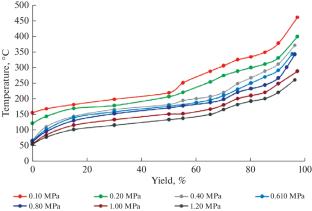高温裂化渣生产针状焦
IF 0.5
Q4 ENGINEERING, CHEMICAL
引用次数: 0
摘要
研究了在不同焦化压力下,以含烷基化萘的高温裂化渣油为原料生产针状焦的工艺。介绍了产品的理化特性。原料和焦化馏出物的化学成分由色谱法和质谱法测定。本文章由计算机程序翻译,如有差异,请以英文原文为准。

Needle Coke Production from High-Temperature Cracking Residue
The production of needle coke from high-temperature cracking residue enriched with alkylated naphthalenes is considered, at different coking pressures. Physicochemical characteristics of the products are presented. The chemical composition of the raw materials and the coking distillate is determined by chromatography and mass spectrometry.
求助全文
通过发布文献求助,成功后即可免费获取论文全文。
去求助
来源期刊

Coke and Chemistry
ENGINEERING, CHEMICAL-
CiteScore
0.70
自引率
50.00%
发文量
36
期刊介绍:
The journal publishes scientific developments and applications in the field of coal beneficiation and preparation for coking, coking processes, design of coking ovens and equipment, by-product recovery, automation of technological processes, ecology and economics. It also presents indispensable information on the scientific events devoted to thermal rectification, use of smokeless coal as an energy source, and manufacture of different liquid and solid chemical products.
 求助内容:
求助内容: 应助结果提醒方式:
应助结果提醒方式:


